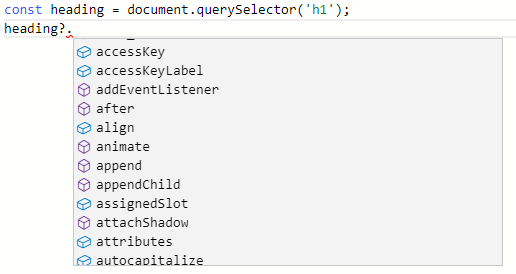Summary: in this tutorial, you’ll learn about the TypeScript types and their purposes.
What is a type in TypeScript
In TypeScript, a type is a convenient way to refer to the different properties and functions that a value has.
A value is anything that you can assign to a variable e.g., a number, a string, an array, an object, and a function.
For example, see the following value:
'Hello'Code language: JavaScript (javascript)When you look at this value, you can say that it is a string. And this value has properties and methods that a string has.
For example, the 'Hello' value has a property called length that returns the number of characters:
console.log('Hello'.length); // 5Code language: JavaScript (javascript)It also has many methods like match(), indexOf(), and toLocaleUpperCase(). For example:
console.log('Hello'.toLocaleUpperCase()); // HELLO Code language: JavaScript (javascript)If you look at the value 'Hello' and describe it by listing the properties and methods, it would be inconvenient.
A shorter way to refer to a value is to assign it a type. In this example, you say the 'Hello' is a string. Then, you know that you can use the properties and methods of a string for the value 'Hello'.
In conclusion, in TypeScript:
- a type is a label that describes the different properties and methods that a value has
- every value has a type.
Types in TypeScript
TypeScript inherits the built-in types from JavaScript. TypeScript types are categorized into:
- Primitive types
- Object types
Primitive types
The following illustrates the primitive types in TypeScript:
| Name | Description |
string | represents text data |
number | represents numeric values |
boolean | has true and false values |
null | has one value: null |
undefined | has one value: undefined. It is a default value of an uninitialized variable |
symbol | represents a unique constant value |
Object types
Object types are functions, arrays, classes, etc. Later, you’ll learn how to create custom object types.
Purposes of types in TypeScript
There are two main purposes of types in TypeScript:
- First, types are used by the TypeScript compiler to analyze your code for errors
- Second, types allow you to understand what values are associated with variables.
Examples of TypeScript types
The following example uses the querySelector() method to select the <h1> element:
const heading = document.querySelector('h1');Code language: JavaScript (javascript)The TypeScript compiler knows that the type of heading is HTMLHeadingElement:

And it shows a list of methods of the HTMLHeadingElement type that heading can access:

If you try to access a property or method that doesn’t exist, the TypeScript compiler will show an error. For example:

Summary
- Every value in TypeScript has a type.
- A type is a label that describes the properties and methods that a value has.
- TypeScript compiler uses types to analyze your code for hunting bugs and errors.